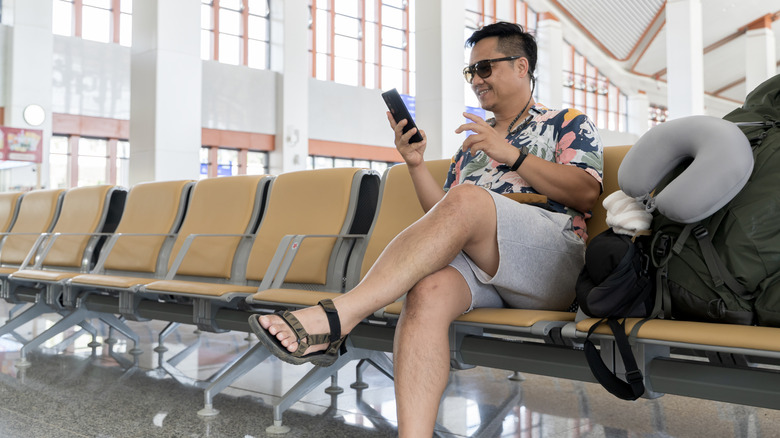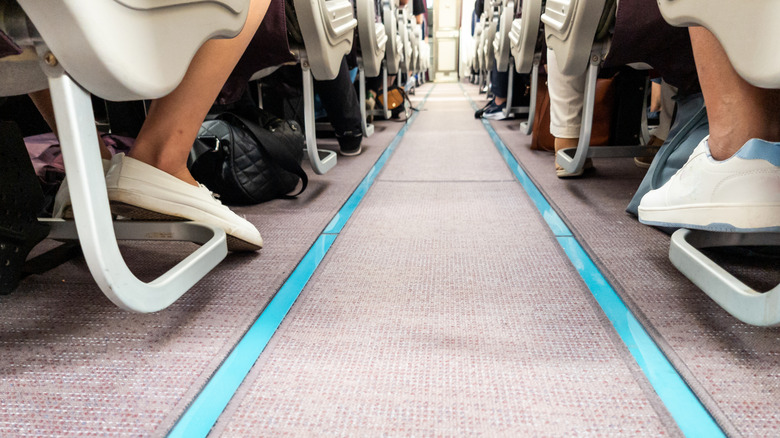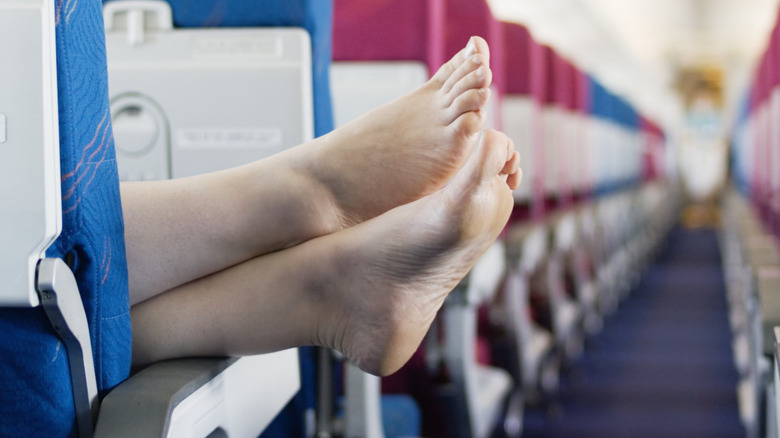The Gross Reason You Should Never Wear Open-Toed Shoes During Air Travel
Air travel can be tough on your body, especially your feet. Between long security lines, endless walking through huge airports, and sitting for hours, your feet take a beating. And if you don't have a direct flight, it's even worse. You might be flying from Milwaukee to Boston but still end up trekking through a massive airport like Atlanta, easily logging thousands of steps. That's why choosing the right shoes can make all the difference in how comfortable your travel day feels.
(Read how traveling can affect your health.)
It might be tempting to opt for your favorite pair of flip-flops or other open-toed shoes, especially during summer travel. They're comfortable, they keep your feet cool, and they're super easy to slip off at security. But here's something to think about. When you're going through airport security barefoot, you have no idea what's lurking on those floors. Sure, your toes might be freshly pedicured and ready to show off, but not everyone keeps their feet so clean. According to the Colorado Foot Institute, airport floors can be a breeding ground for "souvenirs" like athlete's foot, plantar warts, and skin fungus. And the floors of the airplane may not be much better.
What might be hiding on your airplane floor
A photo of Health and Human Services Secretary Robert F. Kennedy Jr. walking barefoot on a plane went viral in November 2023 for good reason. You wouldn't walk barefoot down a city street, and airplane floors really aren't much different. All kinds of germs from public places get tracked onto planes on the bottom of people's shoes. If you happen to have a cut on your foot, it's an easy entry point for infection.
Even if you're wearing open-toed shoes, your feet aren't exactly protected. Your toes can easily brush against the floor several times during the flight. And keep in mind, planes aren't deep-cleaned after every flight, so many types of germs can accumulate before the plane gets serviced. According to a 2019 review in Travel Medicine and Infectious Disease, the airplane bathroom floor can harbor more corynebacteria than the door handle, sink, toilet handle, or even the toilet seat. Corynebacteria can cause illnesses like diphtheria if you're not vaccinated. And it's not just bacteria that can be found on the plane. Viruses like norovirus, which usually spreads through contaminated food, may also be found lurking in airplane carpets and other surfaces.
Open-toed shoes during air travel can get uncomfortable and pose safety risks
It's pretty common for your legs and feet to swell during a flight thanks to blood pooling in the veins of your legs. If you're wearing open-toed shoes, that swelling can press against the straps, making your shoes uncomfortable and tempting you to kick them off. But bare feet on a plane? That might not sit well with your fellow passengers, especially if your feet aren't exactly fresh. A better option is loose-fitting, closed-toe shoes that leave room for a little swelling while keeping your feet protected. Compression socks can also help reduce swelling, especially on longer flights.
While airlines like Delta, United, and American do require passengers to wear some form of shoes while flying, that doesn't stop many people from slipping them off once in the air. But keep in mind, if you're seated in an emergency exit row, your shoes must stay on. A flight attendant told Who What Wear that open-toed shoes can also be a safety hazard in an evacuation because the shoes could easily come off and hurt someone. And on a more practical note, airplane cabins can get chilly, so wearing shoes that actually cover your feet might keep you a lot more comfortable.


